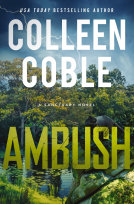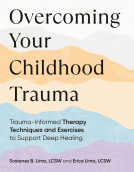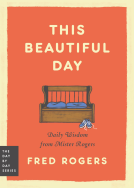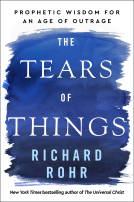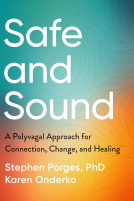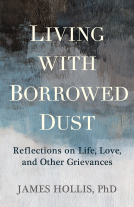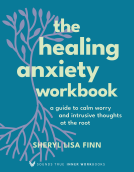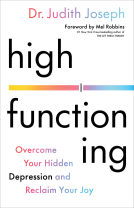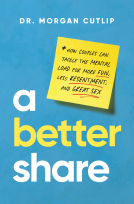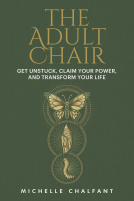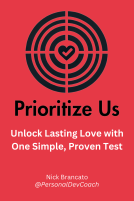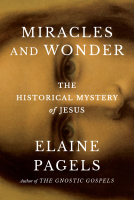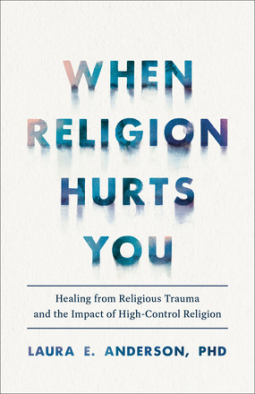
When Religion Hurts You
Healing from Religious Trauma and the Impact of High-Control Religion
by Laura E. Anderson
This title was previously available on NetGalley and is now archived.
Send NetGalley books directly to your Kindle or Kindle app
1
To read on a Kindle or Kindle app, please add kindle@netgalley.com as an approved email address to receive files in your Amazon account. Click here for step-by-step instructions.
2
Also find your Kindle email address within your Amazon account, and enter it here.
Pub Date Oct 17 2023 | Archive Date Dec 15 2023
Baker Academic & Brazos Press | Brazos Press
Talking about this book? Use #WhenReligionHurtsYou #NetGalley. More hashtag tips!
Description
Religious trauma is something that happens far more often than most people realize.
In When Religion Hurts You, Dr. Laura Anderson takes an honest look at a side of religion that few like to talk about. Drawing from her own life and therapy practice, she helps readers understand
● what religious trauma is and isn't
● how high-control churches can be harmful and abusive
● how elements of fundamentalist church life cause psychological, relational, physical, and spiritual damage
● the growing phenomenon of religious trauma
● how to embark on a journey of living as healing individuals and to find a new foundation to stand on
Recognizing that healing is a lifelong rather than a linear process, Dr. Anderson offers markers of healing for those coming out of painful religious experiences and hope for finding wholeness after religious trauma.
"Anderson strikes a smart, balanced tone. An exemplary guide to an understudied issue."--Publishers Weekly
"An exposé of the dangers of high-control religions that makes it easier to recognize and resist religious abuse."--Foreword Reviews
Advance Praise
“A brilliant blend of anecdotal and academic, this book offers a compassionate road map for those recovering from religious trauma. Dr. Anderson offers guidance on how to put lives back together and provides a thorough resource for mental health professionals to help them counsel others in the process. Poignant and personal, this book is a must-have for anyone in the muddy aftermath of their exit from high-control or extreme religious groups.”—Sarah Edmondson, author of Scarred: The True Story of How I Escaped NXIVM, the Cult That Bound My Life
“Dr. Laura Anderson has written a must-read for those who want to deconstruct the complexity of religious trauma through a lens that is not only scientific but also compassionate. This book is for every person who has experienced shame, guilt, self-doubt, and self-hate within religious contexts.”—Yolanda Renteria, licensed professional counselor
“When Religion Hurts You is the most comprehensive, reflective, and helpful book about recovering from religious trauma and church abuse that I’ve ever read. Using research, personal experience, and her training as a therapist, Dr. Laura Anderson offers a powerful and poignant methodology toward healing. I needed to read When Religion Hurts You. Anderson’s wisdom is practical and full of empathy, personal and so very hopeful.”—Matthew Paul Turner, #1 New York Times bestselling author of What Is God Like?
“Both compassionate and wise, When Religion Hurts You is the informative guide needed when making sense of and healing from the disorienting and painful experience of religious trauma. I plan to read and reread it, and I believe it will be a book people can come back to repeatedly on their path to individual and community healing.”—Hillary L. McBride, PhD, psychologist, author, speaker, podcaster
“I remember when I first started drawing cartoons and writing posts about religious trauma long ago, so many people claimed it was rare and I was making a mountain out of a molehill. Now we know differently, and more people are talking about it. I’m so thankful such a compassionate and wise professional like Dr. Laura has provided a valuable resource that will help people not only to understand what religious trauma is but also to find a holistic path of healing beyond it.”—David Hayward, a.k.a. NakedPastor
“When Religion Hurts You is a valuable addition to the robust literature on helping people recover from trauma due to either being born into a religious group that isn’t healthy or being deceptively recruited into a religious cult. I am pleased to endorse this book and its recommendations.”—Steven Hassan, PhD, MEd, LMHC, NCC, founder and director, Freedom of Mind Resource Center Inc.
Available Editions
| EDITION | Other Format |
| ISBN | 9781587435881 |
| PRICE | $19.99 (USD) |
| PAGES | 240 |
Available on NetGalley
Featured Reviews
 Steph T, Reviewer
Steph T, Reviewer
When Religion Hurts You: Healing from Religious Trauma and the Impact of High-Control Religion is an absolutely fantastic book and the first of its kind that I've had the pleasure of reading. Laura Anderson is so knowledgeable and experienced on the topic of religious trauma, and her writing is both accessible and deeply informative. She uses her own experience as a roadmap of sorts, and highlights all the ways adverse religious experiences have impacted her and what she's learned along the way.
Something I truly appreciate about this book is Anderson's unbiased tone throughout her writing; she approaches the subject of religious trauma with compassion and leads the reader toward a deeper understanding of their pain without trashing the idea of religion or using religion as the answer to our problems. Her clinical experience and her in-depth knowledge of complex trauma and high-control religion makes her uniquely qualified to share these insights with us. Something else I appreciate is Anderson's decision to not make this a step-by-step instruction guide for healing. Everyone's journey is different and is informed by their own personal experiences.
This book is truly a gem and I can't wait to recommend it to everyone!
 Laura T, Reviewer
Laura T, Reviewer
When I was younger, I thought of the word "trauma" as a purely physical term. It's what can happen after a bad car accident, or a reason someone might go to the ER. Then I started seeing it used a lot more in an emotional/psychological sense. And lately, it's come with other modifiers attached, such as, in this case, "religious trauma." It seemed like a very dramatic term, and I wasn't sure how exactly it was applied and how someone determined whether they were suffering from it.
In that sense, this book was helpful. Anderson is a therapist and a survivor of what she refers to as a "High-Control Religion" or HCR, and while she references specific flavors of Christianity in her own story and others', she primarily speaks of HCRs in a general sense -- it seems fairly subjective as to whether a particular church or group could be considered an HCR, because personal experience is the key. And she explains this is also the case for trauma -- two people can experience similar things and one can be traumatized by it and the other won't be. So trauma is really about what the experience is for the person who's dealing with it.
With that in mind, she provides a general discussion of how the nervous system works and why our bodies can "remember" trauma even if we've tried to eradicate it from our thoughts and environments. She also discusses examples of religious trauma and its effects, such as purity culture, hierarchical relationships, anxieties about hell/punishment, etc., and gives some advice for taking baby steps to heal. I like how she emphasizes a big-picture view of healing -- that it's not about arriving at some pre-determined point, but about making progress and using the tools you've developed to help manage things like triggers and flare-ups.
She doesn't offer a one-size-fits-all prescription for how to get to a point of being healed (which is good, and in line with how she also warns that it can be easy to jump from one form of fundamentalism to another), and also is not out to try and demonize religion, recognizing that faith is important for many people and can still be a part of the healing process (though this is not written from a Christian perspective). But there are some helpful tips and observations here that are worth thinking about. Emotions, relationships, sexuality, and embodiment are areas that may be affected by life in an HCR, and while some people of faith may not agree with everything here, the topics can bring up good questions to ask ourselves. I especially appreciate the emphasis on curiosity, particularly when trying to get out of fundamentalist, black-and-white thinking.
This book was everything I hoped for, and more. Well done, Dr Laura!
The author outlines what High Control Religions are, what C-PTSD is, how it relates to religious trauma. She looks at many facets of religious trauma, such as patriarchy, purity culture, corporal punishment, adverse children experiences. She gives ideas and tips on how to start healing these areas. I appreciate this quote she repeated different times, in different words: “the goal of healing from trauma is not that you will never be triggered. Rather, a marker of living in a healing body after religious trauma is that when you are triggered, you can access different resources internally so that a different ending can occur.”
The author switches back and forth from her own personal experiences, academics, and as a professional therapist. At times it felt more personal than others. I was highlighting so, so much.
Thank you for taking the time to write this much-needed book. It will be a big help to many leaving HCRs.
 Librarian 227128
Librarian 227128
Complex PTSD is not as widely known or widely researched as PTSD, and when you pair that topic with high control religions there is even fewer resources available. Dr. Laura Anderson's book is truly needed and very enlightening. Those who grew up in a HCR will find that her story resonates. The personal details intersperse the academic information in this book, which makes it more readable. This book is a valuable research for those of us who have survived a high control religion and came away with scars.
 Conrad P, Librarian
Conrad P, Librarian
When Religion Hurts You notes
In Dr. Laura Anderson’s When Church Hurts You, I immediately found myself drawn to the book’s title. I too am a survivor of what is colloquially called “church hurt.” I have mixed feelings toward the book. It’s a good overview of the hows and whys of getting to convoluted feelings toward church and God with a big G which brings on trauma with a big T. You find yourself trying to exorcise demons you didn’t even know were demons in the name of the Lord.
I certainly appreciate Dr. Anderson’s efforts which are greatly needed in a time when caught preachers is a weekly podcast or Youtube post on someone’s social media which can range from the hilarious with a prostitute recording the preacher/john who has decided not to pay this time as he tries to escape the hotel room to the tragic where someone is murdered or harassed to keep the church from finding out their secrets (usually sexual). The book is sorely needed, but I think it is something written more toward the counselor than the lay person. I hope it gets through to those open enough to cater to the needs of the holy and wholly wounded amongst us.
Countering the various theoretical frameworks Dr. Anderson offers her own personal experience and even harkens back to an original story of a male leader who chastised her for having the gumption to have her own mind. Years late, she realized the abuse under the banner of “spiritual authority.” Sometimes called “overseer” or “spiritual father” in the Black church. All of which I have no respect for nor will ever surrender my spirit to no matter who wants to consign me to a hell none of us has ever seen except on earth.
In the earlier part of the book, Dr. Anderson tries to distinguish religious trauma from beliefs to make the experiences talked about herein general or human. I don’t see how you can distinguish one from the other. She also says it’s not the event but the response. It’s both! I think of girls passed around by preachers and deacons. I think of gospel singers on the circuit like Lou Rawls who was raped by a woman as a boy and it gave him issues for life toward black women. It’s the context of church, God and the person that are all framed by religion. To recognize that is an attempt to give Christianity a pass. The entire framework is Christian and the religion must be looked at as a culprit as well.
I know there are those who wish to give Christianity as pass as it has offered them some comfort in a menacing world. I get it. Coming from the Black church, I’ve felt something far removed from the auspices of Christianity I call “divine.” I don’t let it off the hook either. I don’t know any prophets who didn’t sit up with God and the religion of the day.
When Church Hurts You has its salient moments on the page and for that, I’m grateful. It skates over the surface of church hurt which has committed high crimes against whole peoples and these can never be forgiven. I wonder how a black same gender loving man who is aware of the genocide of the church can really reconcile with its tenets. It’s like trying to make an abusive lover not be abusive. I don’t know if it’s possible but I do thank Dr. Anderson for her effort to name the problem. There is a whole lot of work to be done and if Christians own it, I’m not sure the religion will be recognizable in a century or two. Maybe, it will look Christ-like.
With my own experiences with spiritual abuse, I wanted to understand the depths of trauma that can happen to someone. Maybe also reveal if I have any trauma myself. I realized that I didn't have it as bad as the author has experienced but I do know that I have experienced trauma through spiritual abuse. What I love and appreciate the author doing is that no matter how small, my experiences are valid regardless.
This is not a subject that is talked about. Lots of times, this message is severely shunned by other Christians and kept hidden away. When I tell my experiences, it is like I am talking to the wind. It's either they are disbelief that it could possibly be or worse that they are completely blind to it. So shedding like on this subject is amazing.
When the author wrote, "I contemplated giving more details and sharing more experiences, but I am more interested in the process of healing than in what I have experienced." I knew that I picked up a good one. Because the author is interested in healing and not just sitting in the trauma. This has been my experience with people who went through worse spiritual trauma than I have.
I also like that she didn't agree with just walking away from religion as a source of healing the trauma. Dealing with it at a different level. I wholeheartedly agree with the message she is telling.
Though the author had many good things to say, I did struggle to get through it. It has lengthy pages of information that was hard to get through. Many times, there was one long paragraph of information that read like a textbook. So it felt like a 200-something-page book took forever to get through and found myself struggling to connect to the writing style and the message she was trying to convey. So, I wished there were more page breaks and less info dump on the subject.
All in all, this is a book worth going through, but just realize you may have to take this in bite-size pieces.
RECOGNISING AND HEALING FROM RELIGION THAT HURT YOU
Dr. Laura Anderson, herself a victim of High Control Religion, has conducted an extensive study into the effects the methods and teaching have on people’s mental health and physiological, emotional, and spiritual well-being. This is not a church or religion-bashing book but an honest review of how fundamentalist teaching can harm people, especially children whose brains and neurological systems are still forming.
This book should be essential reading for people going through seminary, teachers, counselors, leaders, and those responsible for raising children. It is valid for any fundamentalist agenda, including religion, education, institutions, the LGBTQ community, and those affected by terrorism. It is also a valuable resource for those who are affected by fundamentalist teaching, as Dr. Anderson outlines the neurological effects, which result in anxieties and hypervigilance, to name a few.
Once I understood the neurological process of trauma, I felt a surge of relief as I read this book, as I, too, had been a victim. Healing from spiritual trauma is a lifelong process. It is not a quick fix; forgive the perpetrator and move on sort of book. It is a lifetime of relearning and teaching your body somatically to recognize when you are being triggered and learning new coping skills.
I felt an unexpected shift in my body after reading and understanding this whole process, like a weight had been lifted from my chest!
I liked the precise way the author spelled out the different types of neurological responses and also how she explained that not everyone is affected in the same way, even those in the same environment. It is an individual’s neurological response that must be considered. There could be many, as this is Complex Post Traumatic Stress Syndrome, not just one event, but a person has been immersed in it for a long time. I did find the abbreviations for all the different neurological effects a bit tedious.
I could not put this book down once I had started reading it. The subject matter caught my attention, but I think the less clinical way Dr. Anderson wrote the book makes it easy for the layman, especially victims of HCR, to understand and apply the many healing techniques and resources she gives. I would heartily recommend it, especially to those in ministry and those hurt by religion.
 Reviewer 1007197
Reviewer 1007197
I’m glad this book exists, and I wish it had been around earlier when I was struggling with my faith. It’s no secret that religion has done much harm, but not a lot has been said about the long-term effects of religious trauma. I hadn’t heard the term in any context until I stumbled across a blog post discussing the spiritual abuse that had been inflicted at a church I once attended. The author of the post had worked at the church and was one of the victims.
Through the years, I have grown in awareness of the abusive nature of what Dr. Anderson calls High-Control Religions. While I don’t believe I suffer from religious trauma, I do notice the long-lasting impact it has had on me (stories for another time). Others who have experienced similar abuse from religious bodies either walk away from faith entirely, or continue to perpetuate the same abuses themselves.
Dr. Anderson begins by sharing her own experience with fundamental Christianity and the cPTSD (complex post-traumatic stress disorder) that developed from it. Though this book takes a clinical look at religious abuse and trauma, it is written from a personal lens with sensitivity and empathy. She presents a balanced perspective; in fact, she warns against swinging to the other side of the pendulum and trading one form of fundamentalism for another. She also doesn’t disparage religion, but rather the practices that lead to extremist, black-and-white thinking.
The book goes through several examples of religious abuse, details what neuroscience and psychology have to say about it, and offers potentially helpful coping strategies.
What I found helpful was the discussion on the nervous system and how that plays into the healing process. Even for those of us suffering from other types of trauma, it can become discouraging when we “revert back” or “backslide” in our recovery. Dr. Anderson writes about the non-linear process of healing; it’s something people say often, but she does so from a scientific point of view. She explains why our bodies and brains still “remember” trauma even if we’re years removed from it or have worked extensively on it.
Dr. Anderson writes with compassion and grace, like a therapist you wish you had. She also writes in a way that’s easy to understand, especially as she gets into the clinical aspects of the subject. Her book is both gentle and challenging, as she doesn’t shy away from the reality that complex trauma is often a condition one will have to live with for the rest of their life. However, she offers ways to manage symptoms so that it doesn’t have to be a death sentence.
Those who have had any upbringing in a strict, rigid setting (religious or non-religious) can benefit from reading it. Dr. Anderson gives words to wounds most of us don’t know how to voice and therefore don’t know how to heal from. Giving language to our experiences and emotions is the very first step toward healing.
"When Religion Hurts You" is a book that I've recently picked up, and I must say, it holds immense promise. I didn't finish it, but not because it wasn't worth it—rather, it was too soon after my own religious hurt.
This book resonates deeply with my experiences, and I can already tell that it's going to be a crucial part of my healing journey. I had to put it down because I realized I wasn't in the right mental space to process everything it has to offer. But that's not a fault of the book; it's a testament to its power.
From what I read, the author's insights are profound, and their writing is compassionate and understanding. It's like having a wise and empathetic friend by your side, guiding you through the intricate emotions and complexities that arise when religion causes you pain.
I can't wait to pick up "When Religion Hurts You" again when I have the mental capacity to fully delve into its pages. I'm certain it will provide me with the guidance and solace I need to heal and grow. This book is a beacon of hope for anyone who has ever felt the sting of religious hurt, and I'm confident it deserves every one of those five stars.
Laura Anderson presents a well-researched and evocatively personal account of the many ills behind high-control religion. It's quite clear from start to finish that manipulation is just that, however godly it is dressed.
 Terri L, Media/Journalist
Terri L, Media/Journalist
This was an interesting look at religion and the aftermath of extreme views and religion. If religion does not give you a warm and fuzzy feeling, then you should take a look at this book. Laura Anderson has been there and done that, and gives you practical advice to move you forward in your life.
My goodness, this book is just so important. I will for sure be going back to read it again and again, I have no doubts about that. I am so happy that I found this on NetGalley (thank you for the opportunity to read this). For anyone that is questioning, left or just having doubts about their own religious upbringing-read this. Trauma is a word that I’m no stranger to, but learning about it within a context of something I’ve been brought up in, it really helped with my own healing. I enjoyed this book immensely
When Religion Hurts You is the most comprehensive and accessible book on healing religious trauma on the market. The author combines her expertise as a licensed therapist, trauma coach, and co-founder of the Religious Trauma Institute, with her personal experience living with complex trauma from her own religious experiences.
Dr. Laura Anderson is one of the foremost experts on religious trauma. As a therapist and coach myself, she is my go-to voice for learning about the mind-body connection when it comes to spiritual abuse. She coined the term adverse religious experiences and defines what a high-control religion is. According to Dr. Laura, religious trauma is trauma; trauma is subjective; and trauma cannot be healed by just changing our minds because the effects of trauma are stored in the body. These concepts have been revolutionary in my conceptualization and treatment of trauma.
The book is not a step-by-step guide to healing, but covers “healing themes” that someone with religious trauma may address. Dr. Laura discusses topics like rebuilding your identity, your relationship with your body, boundaries, grief, emotions, sexuality, healthy relationships, and the nervous system. As Dr. Laura says, we are never “healed” from trauma, we are living in a healing body. I appreciate this emphasis on healing as a lifelong journey in which we “integrate the living legacy of trauma” into our stories.
The chapter on reclaiming sexuality and pleasure spoke to my area of expertise in purity culture recovery. Dr. Laura’s advice on how to prioritize embodiment and experience pleasure in safe ways is in line with my approach. I appreciate how Dr. Laura encourages developing a sexual ethic that avoids the pendulum swing from purity culture to its opposite. Instead, she advocates for a sexual ethic that reflects an individual’s “unique personhood, character, and values”.
As Dr. Laura no longer identifies as religious, some readers will not agree with her description of high control religion. For example, the doctrines of original sin, heaven and hell, and the practice of tithing are all labeled as types of abuse (or adverse religious experiences). Some readers who still identify as Christians will be left to wonder how and when these beliefs and practices are abusive—and when there are just differences in theology.
I appreciate that Dr. Laura states, “Neither religion nor its practices and beliefs are inherently traumatic; rather, the effect of an experience, belief, or practice on an individual is specific to that person.” Because trauma is subjective, what is traumatic for one person may not be traumatic for another. “Practically, this means that trauma is in the eye of the beholder,” states Dr. Laura. This leaves lingering questions about how to resolve differences in beliefs and their effects on individuals.
In Dr. Laura, I have found a trustworthy, compassionate teacher who has expanded my knowledge and understanding of trauma, the body, and healing. I am grateful that I can recommend this book to almost any of my clients or audience, for I believe we can all learn from Dr. Laura’s wisdom and hard-fought experience.
 Beth P, Reviewer
Beth P, Reviewer
United States Publication: October 17, 2023
Thank you to NetGalley and Baker Academic & Brazos Press for this advanced reader's copy. In exchange, I am providing an honest review.
I'm having the hardest time composing any sort of articulate review beyond a *speechless* utterance of, "Read this book!" And that's just not helpful, is it? The dedication at the front of the book introduces this title and its contents in a succinct way. "For all who have been harmed by high-control religion, who have suffered adverse religious experiences, and who live with religious trauma. May this book provide hope and healing - abundant life does exist." Several years ago, a close friend and I half-jokingly bantered about our spiritual PTSD - not wanting or needing to diminish the seriousness of PTSD. However, little did we both know what we were describing to one another wasn't far off the mark. I didn't realize how accurately we were processing our years in an HCR.
Anderson begins her book by sharing her personal story of growing up in an HCR and eventually leaving. She then went to school for psychology. Following the disastrous United States election in 2016, her therapy practice filled up with bewildered clients who were feeling betrayed by friends, family, the evangelical church, and its spiritual authorities. Her clients began asking, out loud, the questions they had about life, faith, and God. They started sharing physiological and psychological symptoms consistent with trauma, extreme stress, and shame, all of which mere cognitive shifting wasn't and couldn't help. As Anderson and her clients processed together, she recognized that some of the triggers and responses were reflective of PTSD and others were exhibiting complex trauma from enduring decades of religious indoctrination and practices in their family of origin and churches. And these weren't people from the churches and denominations you might expect to hear, these were people from the run-of-the-mill church down the road, so to speak.
Anderson moves on from her personal story to discussing trauma. And she wants to make it clear that religious trauma IS trauma. In 2019, Anderson decided to create a resource for other mental health professionals to assist in educating them on religious trauma, abuse, and adverse religious experiences. While religious trauma is trauma, it differs in some ways from the trauma experienced through sexual abuse, war experiences, or an event like the collapse of the World Trade Center, etc and Anderson knew that a resource educating on the specificities of religious trauma would be welcome and needed.
Along with co-founder, Brian Peck, she created the Religious Trauma Institute and partnered with the Reclamation Collective. Through her own continuing personal processing and healing and meeting with clients, Anderson realized that religious trauma was a very deep and wide wound that would take consistent therapy and work to heal from and in some ways, the healing would never end - it would ebb and flow throughout the remainder of one's life. That's not meant to discourage, it's meant to affirm the process and work.
Anderson begins first by explaining what trauma is, how it manifests in the body and soul, its physical afflictions, and its mental affectations. She then redefines healing. We want it to be a fixed event but Anderson explains why it is not. The remainder of the book outlines and discusses in depth nine key areas that are impacted when someone sets out on a healing journey. Anderson acknowledges the nine areas don't form an exhaustive list but are comprised of what Anderson herself experiences and has seen through her practice.
I realize this is, to this point, a summary rather than a review of this title so let me now get on with some semblance of a review. I began reading this book after having experienced a couple of moments in which it was clear something I heard or saw had triggered me regarding my former religious life. Was it trauma responses or just benign flashbacks? Fortuitously this book became available for me to read in advance of its publication. And, thanks to this important discourse from Anderson, and some other conversations and realizations, I now know what kind of work is ahead of me and I have confidence in stating the truth of what I am experiencing - religious trauma. I am someone who has experienced deep and sustained religious trauma that I need help processing and working through to healing. I am extremely grateful to Laura Anderson for her life experience and her professional work and for her generosity in sharing it through her therapy practice, her founding of the Religious Trauma Institute, and now in this published work. I will now be a benefactor of her generosity as I know now how to pursue help for my own religious trauma.
Anyone still deeply involved in their religious institution will scoff at this book and the important information it contains. But anyone who has begun to disentangle themselves will recognize themselves and realize there is help and healing in the post-religious life.
This book is a not a "how-to" for one's deconstruction process or what topics one should revisit, but rather is like someone walking you through the side effects of a procedure and offering validation and suggestions on how to navigate them.
In this book, Dr. Anderson walks through the various ways high-demand religious environments and their messages - eternal conscious torment, purity culture, the exclusivity of the social dynamics, the power imbalances between "anointed pastors" and volunteers, and more - get engrained into one's body and nervous system. Healing from religious trauma isn't just a theoretical exercise, but also involves getting in tune with your body to process trauma and engage in new, healing ways forward.
She also provides notes on remaining curious through deconstruction, navigating the online deconstruction world, and how to navigate healthy disagreement and rebuild community after leaving a religious institution.
Through it all, she encourages the reader to prioritize their autonomy and what healing looks like for them. What is trauma for one isn't for everyone and same goes for healing. The goal isn't to simply swing to the direct opposite of whatever teaching or tradition was painful or demonize religion altogether, but to embody the values that reflect your priorities as you continue to grow and heal beyond adverse religious experiences.
Whether you're deconstructing or are wanting to learn more about religious trauma from a psychologically sound viewpoint, this is a handy guide to all who desire to heal together.
This book was deeply impactful and hopefully will become necessary reading for all mental health professionals.
I have experienced the difficulty in getting help with religious trauma, and have been made to feel like I was exaggerating or crazy by the glassy-eyed stares of therapists. This book did the opposite. I felt validated, educated, and hopeful in the most realistic sense.
First, I loved how this book defined trauma as our bodies response to something instead of an event that happens. When we define trauma as a specific type of event or experience, it becomes easier for people to discredit trauma in others, which happens frequently with religious trauma. By defining it by our bodies response, it becomes difficult to discredit because it is a physical, biological, heightened response from our body.
Next, I loved that healing was not described as something we simply arrive at. Instead, healing is a journey we will always be on. And healing will look different for everyone. I appreciated that the author did not make leaving all religion required for healing.
Finally, I found many of the examples very relatable. All of the subject matter was approached with a level of care and nuance that is not often seen. I will definitely be recommending this book to friends.
Thank you Netgalley and Brazos Press for a copy of this book in exchange for my honest review.
Jonestown. Heaven’s Gate. Those words bring horror to the reader’s mind. Most reasonable people agree cults have great power to harm their members. But most people wouldn’t add religious sects and Christian denominations to the list of potentially dangerous organizations.
I know I didn’t. But after reading Dr. Laura Anderson’s book, When Religion Hurts You, I have a whole new understanding of how something with great potential for good can turn into something hurtful and even harmful.
Let’s take care of the elephant first. Religion can hurt you. But not everyone will feel the same effects of religion in the same way. Webster defines religion as 1) a personal set or institutionalized system of religious attitudes, beliefs, and practices. 2) The service and worship of God or the supernatural. 3) Commitment or devotion to religious faith or observance.
Our personalities, values, character, Enneagram number, and temperament (sanguine, choleric, melancholic, phlegmatic) determine how we react to religion. Maturity also plays a role in religion’s ability to hurt us. What scares us at one point in life might not scare us at another.
Dr. Anderson wrote the book as part of her doctoral program in counseling (her dissertation). She shares anecdotes about how religion hurt her as a young child, adolescent, and adult.
Most people who work with youth have heard of Adverse Childhood Experiences (ACEs). The higher a child’s ACE score, the more likely the child will suffer from trauma. Dr. Anderson explains how ‘trauma is not the event or the thing that happened to us; rather, it is how our bodies and nervous system respond to what happened to us.”
If four people experience the same event, their bodies will react in four different ways. The same event may only traumatize one of the four people. It might also traumatize all four of the people. We can’t predict or know with certainty what will or won’t traumatize someone.
Trauma doesn’t only happen on the battlefield. It can happen in a church, too. Dr. Anderson relates how traumatized she felt as a very young child when she first heard about Jesus dying on the cross and how those who didn’t accept Jesus would burn in hell.
Dr. Anderson also brings two new terms to the table: HCRs (highly controlling religions—the Amish, for example), and AREs (adverse religious experiences). The more controlling a religion, the more likely those who belong to it will experience multiple AREs. The author also explained an important new term: complex post-traumatic stress disorder (CPTSD)
She grew up in what she calls a “strict fundamentalist, evangelical, Reformed theological background.” This HCR, combined with her unique personality, caused her body to react to incidents she experienced in a religious setting (AREs) as trauma.
Untreated over time, this trauma manifested itself in her body as CPTSD. She isn't the only one. If you feel triggered or traumatized by all things churchy, this book is for you. If you have a friend or family member who has deconstructed or deconverted, this book is for you, too.
It's time we engage in honest conversation about the not-so-shiny effects of religion.
 Reviewer 1155610
Reviewer 1155610
This was an interesting book that discussed the trauma that can be caused by high control religions. There is a good foundation of the science behind trauma and PTSD, and how aspects of high control religions can lead to long term trauma, though I did sometimes find it a little tedious at points. I appreciate the author's personal story as it made the book more engaging and personal.
I have been in the church for my entire life, though not in what I would consider a high control church, as such much of the book was looking at issues that I haven't personally experience. There were however pieces that apply to much of the christian world in general and so it did help me to think about some of the issue that I have been noticing and trying to work through in my own life. The part where she mentions the acronym for JOY, as Jesus, others, you, was especially helpful, as I had just come to this conclusion, including how bad that view can be, in the month before I read this book. Having it affirmed was helpful for me.
I received an advance copy of this book from NetGalley. All opinions are my own.
This was an interesting take on ways to cope with and address religious trauma. I was expected more of an anti-religious approach as that is the one that I take. The author does state that she’s still a Christian which does affect her point of view. As someone who dealt with forced religion through their teen years, it’s hard finding someone to talk to who understands it. Young readers will be glad they picked this up if they too have no one to talk to. It’s nice knowing you’re not alone.
 Michael L, Reviewer
Michael L, Reviewer
This book is destined to help many, many individuals. It is groundbreaking in the discussion of religious trauma from a psychologist's perspective. And I love the way she shares her own personal experience. I highly recommend it to anyone who has been exposed to a high controlling religion.
 Scott C, Reviewer
Scott C, Reviewer
Laura Anderson provides the healing HCR community with a helpful resource. Part psychoeducation and part
therapeutic. The author is current with research and articulates complex ideas well. It lacks a developed positive way forward and leaves much to be wanting. While rightly critiquing purity culture, there is no theology of the body or sexuality set forth.
 Librarian 823472
Librarian 823472
This book made me cry multiple times. I have read a great many psychology, trauma, and self-development books, and this one ranks right there with Brene Brown's works for how validating and helpful it has been. I completely recommend this to everyone who has become disenchanted and disenfranchised from religion, especially those who come from the conservative and evangelical background like I did.
 Karen C, Reviewer
Karen C, Reviewer
As someone who has personal and professional experience working with the impact of religious trauma and spiritual abuse, I have been following the work of Dr. Laura Anderson, psychotherapist and co-founder of the Religious Trauma Institute, for years now. When I saw she was releasing a book, I immediately signed up to be part of the launch team. The book, When Religion Hurts You: Healing from Religious Trauma and the Impact of High-Control Religion, released to the public on October 17. I knew this book would be good, but it exceeded my expectations and I have already been recommending it to clients, colleagues, and friends.
Anderson’s book skillfully and smoothly weaves together her own story of healing from complex trauma (including religious trauma), qualitative data from her work with therapy clients who have experienced religious trauma, and the most up-to-date research in the field. She emphasizes that trauma healing is an ongoing process, not an endpoint (and that many people coming out of High Control Religions (HCRs) have to rewire their brains from what evangelicalism taught them about heaven and life on earth in order to embrace this). Her tone throughout the book is that of a well-informed expert in her field, but is never patronizing or arrogant. Most of the content in the book is accessible to a layperson, unlike some other well-known books on trauma that are written more like PhD-level textbooks. This book would be helpful for anyone trying to understand the impact of growing up in a HCR, whether it was their own experience or someone else’s. Dr. Anderson provides clear definitions for many of the buzzwords going around the internet/social media related to trauma and explains in a non-judgmental way how and why HCRs impact individuals long after the individual may have left the HCR environment.
When Religion Hurts You is well-organized and broken down into chapters grouped by content/themes. I’d recommend reading this book in sections, not all at once, as there is a lot of information to take in as well as a deep emotional impact of reading the stories in it. The first few chapters explain why and how she came to do the work she does now, including her own experiences leaving a HCR, the history and current context for trauma research and specifically religious trauma research, and the components of the self that are affected by complex trauma including cognitive beliefs and the nervous system. Later in the book she includes brief exercises that readers can try in order to move towards nervous system regulation, embodiment, and self-trust.
As someone with personal experience growing up in a HCR, I appreciate the nuance, respect, and thoughtfulness that Anderson displays throughout the book. In the chapter on grief, she notes that after leaving a HCR there are many things to grieve, including: childhood, education, sexuality, view of others/the world, and the good, because not all parts of HCR communities are bad. The following chapter appropriately discusses the importance of developing a “robust spectrum of emotions” because HCRs tend to discourage any intense emotions, or only encourage positive ones. The chapters on sexuality and pleasure and establishing healthy relationships with others explain how and why HCRs impact people in these areas of life as well as provide guidance on how to heal them. She concludes by referencing the work of my personal favorite trauma therapist, Dr. Janina Fisher, who talks about the “living legacy of trauma” and how we can integrate the parts of ourselves as we are, triggers and wounds and grief and all.
I’ll close this review with one of my favorite passages from the book:
“This is what healing is all about — the process. Perhaps this year or next year or ten more years down the road my body will no longer respond to trauma-versaries, but that is no longer my goal. I have lived far too much of my life with the end goal of eternal life in heaven, and so I missed a lot of life on earth. These days, even in the dark, difficult, and painful moments, I let my body take the space that I need to come back home to myself. I give myself many moments to reflect and to celebrate how far I have come.”
 Ian M, Educator
Ian M, Educator
As someone who has dealt with religion/church hurt like Dr. Anderson discusses in her incredible book, I do not know that I can remain impartial in my review. What I can say is that while I was hesitant to read a book that addresses my lived experiences as I was concerned I would be triggered, this was not the case. I found Dr. Anderson's writing and care for those who have been hurt to be healing. The book helped put to words many things I felt but had not been able to express. I will be thinking on this one for a while and will likely need to read again at least once more to fully grasp everything. Thank you, Dr. Anderson, for you work and this book!
When Religion Hurts You deals with the psychological (and sometimes physical) issues that happen when church culture is extreme, misogynistic, or even cult-like. Laura E. Anderson looks at the trauma from the church in the latest scientific terms. This is the first I have read of the idea of PTSD being related to church but it is not wrong and I commend the author on making religious trauma a certain kind of psychological practice. The only issue is that I saw no new way to handle PTSD that hasn't been used before in other areas.
That being said, I recommended this to a friend. He bought it and (with a therapist) has begun to work through his own issues,
 Reviewer 819170
Reviewer 819170
Thank you for the fantastic opportunity to read this book. It was beautifully written, and I'm delighted that this resource exists. What a gift it is to the wounded who are looking for ways to heal together.
I was glad to find a book that gets in depth about the trauma that religious systems can cause and doesn’t mince words. Most of the book was very relatable to me and her detailed stories validated many things that I’ve dealt with over the years.
Thanks to NetGalley and Brazos Press for an ARC of this book.
I was intrigued by the title of this book. Unfortunately, I would say the majority of the population can probably point to a time when religion hurt them. My belief system is somewhat different than the author's. However, I was fascinated by everything she shared regarding PTSD and trauma, and I know that religious trauma is a very real thing. While I didn't agree with everything stated in this book, I did learn a lot, and I know by reading the material she presents here that I will have more empathy for those who have experienced religious trauma. Interestingly enough, being a Pastor's kid, I definitely could relate to some examples she gave, but never thought of situations in my life as religious trauma. I feel different about that now. I would recommend this book with the warning that you may not agree with everything, but you will walk away having learned something.
I received an ARC copy of this book through NetGalley in exchange for an honest review.
 Adam S, Reviewer
Adam S, Reviewer
Summary: High-control religious communities can create harm, but there are ways to move toward health
Harm from religious communities and individuals is not a new concept. However, recent increased attention to sexual abuse within the Protestant church and earlier public Catholic cases has drawn attention to the ways that church government and church systems can foster abuse of all sorts. Laura Anderson is primarily writing to help people recover from high-control religious communities, but there are principles here that are broader than that.
Anderson is not avoiding the term trauma (it is in the subtitle), but she is also trying to suggest that there are different levels of harm and that the response to that harm can be different. Two people can grow up and experience the same home, but one can be traumatized by practices that are not traumatizing to the other, even if the practices were applied to both. Part of the difficulty is that the word trauma has shifting meanings, so a more general "harm" can be helpful to apply to more than just legally documented abuse.
One of my takeaways from When Religion Hurts You is that high-control religious communities control as a means of protection and mission. There are evil people who are trying to control people and build their power for their own selfish purposes. But I think more often, people are attempting to help others and fulfill the church's mission from their perspective. This happens by setting up boundaries to prevent harm, which becomes rigid rules that can themselves become harmful.
There are more than several stories of people who experienced the world and tried to protect others from the harm they experienced. My grandmother was firmly against alcohol because she grew up the child of an alcoholic. Others have sexual experiences outside of marriage (consensual or not) and then attempt to protect others by creating rules around sexuality, not to harm others but to protect them. Another common example is that people who were badly parented often do not have parenting skills by example and turn to high-control religious groups to give them tools to combat the bad parenting they experienced previously.
I am not trying to blame victims of trauma or religious harm but explain that in many cases, those who are drawn to high-control religious communities are either trying to address the harm that was done to them or trying to prevent others from the harm that they experienced by their own choices. Another way of saying this is that people can be drawn to high-control religious communities as a trauma response.
I say this because, in many cases, those who are trying to leave high-control religious communities are not very different from those who remain or those who are drawn in. However, I believe that those who heal may have a ripple effect at helping to bring about healing or at least changing patterns for future generations. (I think it is common for people to be drawn from one high-control religious community to another, religious or not.)
Laura Anderson is writing from the perspective of a person healing from religious harm and as a therapist who works with people who have had religious harm. Her story is an integral part of the book. Part of what I appreciate about her clear voice in the book is that she is attempting to moderate the tendency of pendulum reactions. There is a chapter on sexuality and purity culture. Purity culture was a pendulum response to the sexual revolution. And in some cases, people who are leaving purity culture will tend to pendulum swing again. The advice throughout the book about moving toward health in ways that avoid pendulum swings is very helpful. Although there are places where I think I would give different advice, I understand the reasoning behind her advice and understand that different perspectives will result in different advice.
I highlighted many long sections, and I do not want to have a quote-heavy review. But I do want to touch on a couple of ideas that were helpful to me. Throughout the book, there was an orientation toward health and movement, but also a moderation of expectations because healing is not so much a goal of perfection as a movement toward more health than what you have right now. Part of what Anderson is reminding us is that in high-control religious communities, there is often an orientation toward heaven and how good things will be in the future to distract from the fact that many high-control religious communities have little to offer right now. There is often an emphasis on suffering, and that can encourage living in pain instead of movement toward healing.
There is also a good discussion of what trauma is and how it is a
"subjective, perspective, and physiological response to a person, place, or things that overwhelms the nervous system's natural capacity to cope. Practically, this means that trauma is in the eye of the beholder. What is traumatic for one person may not be traumatic for another, and the body may experience trauma as a result of either real or a perceived one....This means that trauma is determined by one's response rather than by a particular person, place, or things." (italics in the original.)
I also appreciate that her space for the variations between harm, abuse, and trauma means that we still need to pay attention to the harm, even if it does not feel as large as someone else's harm. That harm will generate a response:
"If our nervous system determines that we can't fight or flee, it moves to fawning or freezing response. A person with a fawning response lives in a state of needing to please, appease or submit to avoid danger or punishment; a person with a freezing response often dissociates, becoming, small, silent, and a nonparticipant in their life. It only takes a couple of attempts at fighting or fleeing to realize that it's safer to fawn or freeze."
It has long been discussed that a number of saints of old seem to suffer from depression, scrupulosity, trauma, or other mental illnesses. God can work through people who are suffering and not healed. But there are also maladaptations to religious practices as Laura Winner explores. The ability to suffer in the face of harm may be just a trauma response, not a calling. Particularly in high-control religious communities, suffering and submission can be overvalued.
"Many victims believe that if they could submit more, repent more, serve more, sin less, or become a stronger believer, then life might go back to the way it was. Additionally, HCRs often teach a certain expectation of suffering, that suffering and difficulty are God's way of testing and refining a person. When life gets difficult, it is not uncommon for members to see the difficulties as spiritually beneficial."
There is far more in the book than what I can grapple with here. There are two final corallaries.
"I believe fundamentalism is a coping mechanism to deal with a dysregulated nervous system. As we saw in chapter 4, we know that humans thrive on what is familiar. This is why people and ideas that are different may seem dangerous and why an overactive SNS [sympathetic nervous system] triggers a fight or flight response. In those moments our nervous system is trying to figure out what will help us calm down and feel safe again. Fundamentalism helps with that: it gives specific, orderly, binary, prescriptive ways of engaging with life."
As much as I am convinced by her point in trying to find an explanatory reason for the tendency toward highly controlled religious communities. That being said, I am even more convinced that healthy Christian communities must be marked by diversity and healthy discernment (which will sometimes result in differences of opinion). Discipleship in these communities much be concentrated on helping people to seek God's direction for them and freedom to follow that. I am not naive enough to think that this will be easy or fully realized. But as much as Anderson is explaining, her point is that a healthy Christian community doesn't act like the high-control fundamentalism of her history.
This is why I am committed to spiritual direction and discernment as two (fallible) tools to help us move in the right direction.
 Reviewer 815381
Reviewer 815381
A very important read for anyone dealing with religious trauma or who loves someone dealing with religious trauma.
Anderson writes with compassion and she also writes in a way that’s easy to understand, especially as she gets into the clinical aspects of the subject. She doesn’t shy away from the reality that trauma is often a condition one may have to live with for the rest of their life. However, she offers ways to manage symptoms so as to ease the pain of trauma. If you are searching to ease the pain from religious trauma from a psychologically sound viewpoint, this is a handy guide to begin the process. I received a complimentary copy of this book from NetGalley. Opinions expressed in this review are completely my own.
 Lisa C, Educator
Lisa C, Educator
It is always interesting to me to read about people’s personal experiences especially with the church and how it has changed them in some way. Thanks for the advanced copy.
 Lisa B, Reviewer
Lisa B, Reviewer
This book will help you get a clearer perspective of your own experiences of trauma with religion. Anderson explains that not all religious trauma comes from big dramatic incidents, like sexualized violence. Even smaller, day-in and day-out circumstances can be traumatic, if they're unhealthy ones. Anderson explains that adverse religious experiences (AREs) are often common within high-control religions (HCRs).
For instance, Anderson says this about the purity culture in HCRs,
"Women are [expected] to be the gatekeepers of men’s purity of mind, heart, and body so that they do not sin. Women are taught that their bodies are dangerous; men are taught that their minds are."
It's an unhealthy extreme for both females and males.
Anderson touches on many variables throughout the book on ways religion can cause trauma, including teaching that we aren't capable of trusting ourselves. Anderson writes,
"Many HCRs teach that humans are inherently sinful, that they cannot trust themselves, and that they will never choose good on their own."
Anderson says there are many ways to begin healing from religious trauma. For starters, make sure you are meeting your basic needs.
"When a client comes in with high anxiety and stress, one of the first areas I check on is basic needs. Are they getting enough sleep? Enough food? Water? Movement? Connection to humans?"
Since trauma gets trapped in bodies, Anderson suggests we nurture our bodies for healing.
"When I love my body, when I humanize myself, I love and humanize others. This is an act of rebellion in HCRs. Loving your body opens space to love, understand, and have empathy and compassion for every other body, no matter how similar or different those bodies are from your own."
The rewards from a journey of healing are numerous. Anderson concludes her book with this encouragement:
"You will have moments of celebration as you realize how far you've come, as you inhale the present moment, and as you look around at your brilliant, messy, beautiful self and know that you are free."
I highly recommend this book.
My thanks to Netgalley and Baker Academic & Brazos Press for the review copy of When Religion Hurts You.
An excellent guide to understanding, dealing with, and healing from AREs (adverse religious experiences) and HCRs (high-control religions) and the trauma that can result. While Anderson doesn't go into extensive detail, she includes just enough of her own painful story to establish her empathy as a survivor of religious trauma. Her personal story/understanding of the issues and her professional credentials as a trauma-informed therapist come together to make a compelling and helpful read.
I received an ARC of this book from NetGalley — so glad I requested this one.
 Lindsay O, Reviewer
Lindsay O, Reviewer
This is a great read for folks who are healing from a high-control religion (HCR). Christians involved in evangelical spaces in the 90s/early 2000s were affected by HCRs as they have been influential in the U.S. Christian church, at large.
Dr. Anderson walks readers through what trauma is, what it looks like in religious settings, & markers of healing for folks recovering from fundamentalism. I appreciated her statement that religious trauma is trauma, as well as her description of the phases of HCRs gradually gaining control over folks who fall prey to them. This can lend compassion if we wonder why we/others became ensnared in these dynamics &why we/they may have had difficulty leaving.
Dr. Anderson explains how the nervous system works & how HCRs play on nervous system responses in order to gain control. She discusses the process of rebuilding identity after leaving HCRs, engaging in relationship with the bodies, stabilizing the nervous system, developing more flexible boundaries, learning to tolerate a “robust spectrum of emotions,” & reclaiming sexuality& pleasure.
This book is clear& informative. Stories of personal experiences with religious trauma are engaging. I found it helpful personally &in my role as a spiritual director.
A couple points of distraction for me… most of her claims seem solidly built upon research, but I wish there had been fewer instances of “I believe” & “anecdotal evidence.” Also, she refers to substitutionary penal atonement as being foundational to Christianity. While I appreciate her attention to the harm it causes, this centers white evangelical Christianity in the U.S. w/o acknowledging other historical expressions of Christianity that didn’t/don’t subscribe to this theology. That realization has been hugely important to me in healing my relationship with Christianity, so I think the distinction matters.
Overall, I highly recommend this for deconstruction folks & the people who love, lead, & minister to us.
 Amanda K, Reviewer
Amanda K, Reviewer
I couldn't have found a more fitting read - as someone who has navigated the complexities of an HCR firsthand and as a social worker specializing in trauma. I've practically painted the pages of this book with highlights and am eager to secure a print copy for my professional bookshelf for easy reference. This book is a beacon of truth, offering invaluable insights for both survivors and practitioners in the field of trauma recovery!
 Michelle H, Educator
Michelle H, Educator
Laura E. Anderson is a therapist and the co-founder of the Religious Trauma Institute. Having experienced her own religious trauma and then dealing with patients who have religious trauma compelled her to write this book, "When Religion Hurts You: Healing from Religious Trauma and the Impact of High-Control Religion." Anderson begins her book by defining trauma not as "what happened to you but your body and nervous system's response to what happened to you. Trauma is anything that is too much, too soon, or too fast and that undermines our normal ability to cope and return to a sense of safety." Anderson is very transparent when detailing the spiritual abuse she experienced and how that has lead to her own religious trauma. I appreciated how honest and open she is in her writing, as well as all the helpful advice she gives.
I especially resonated with her assertion that healing is not a destination, it's an ongoing journey. This book really spoke to me, and I think it would be incredibly helpful for anyone who has been hurt by the church. Thanks to NetGalley for the ARC. All opinions are my own.
 Megan T, Educator
Megan T, Educator
This book is absolutely incredible. Anderson does a great job of sharing her own life story and making it accessible and understandable but not overwhelming. In addition, she writes in a way that offers compassionate understanding and steps for how to discuss this with a trained professional.
In addition, I was glad to see she references others' work and provides resources for readers. She has truly done her research.
This book is a tough one to get through because of the topic, but well worth the read. Be prepared for introspection.
 Rosa S, Educator
Rosa S, Educator
It seems like a lot of previously religious people are tossing in the towel. They're becoming areligious or anti-religious. Sometimes they walk away from settings where they cannot bring their doubts and questions to God or religious leaders. Sometimes it's because of cultish abuse, mental anguish, sexual trauma and other issues.
Anderson gives hope for healing from such traumas. She uses psychology to consider the control issues and abuse that lead to fear and lack of trust in adults and authorities. She does a good job.
I recognize much of what she writes about. My family and my husband's family grew up in a high-control ethnic church where peer pressure (on adults and children) and edicts from the pulpit were prominent. Those defined what was acceptable in theology, recreation, and clothing (hey, no jewelry but brooches; though fancy hats with feathers and other ornaments were ok).
Preachers defined and warned against interactions "with the world." Any thinking child or teen knew some of the strict prescriptions were a double standard or just made no sense. But we went along with it and carried on as a group.
However, the balance for me was that our family had a personal faith and welcomed questions. We children could ask our parent questions as long as we asked respectfully - no sassing or badmouthing. (I don't consider genuine respect for authority to be abusive; it was healthy and reassuring for kids.) My mom and dad sincerely answered with what they did and didn't know. And they encouraged my brothers and me to search the scriptures for ourselves and pray for guidance.
That worked for me. We left a lot of the cultural baggage and narrow theology behind as university students and adults.
And then we had children who grew up in the next generation of faith. We were much less restrictive but still rule-bound as "strict" parents. So our kids challenged us even more.
We did some weird stuff with dress codes. Ask my daughter about the skirts she wore over her shorts in elementary gym class - what was I thinking? By her teens, I resorted to "wear whatever's modest" for our fashionista, since living in Seattle in the 90s offered grunge clothes in dark, limp, secondhand cover-ups.
"Don't you care what your kids are wearing?" asked people at church. (Nope. "Modest enough, they're not naked," made this mama happy.)
And that happened with other things. Because our own parent allowed us to explore the faith, we gradually shed the culture and unclenched our religion. As parents ourselves, we chose the principles of Love God; Love others as more important than following religious mandates that were not in scripture.
"I hate the dumb rules," said one of our teens of the strict codes of behavior and dress in his private school. "I don't think any of this matters. And I don't want to be a hypocritical follower of Jesus by looking good and being unchanged inside like some of my classmates."
"I think you're right, but you're in a place where it matters to your teachers," I replied. "Definitely don't adopt a fake religion with an unchanged heart. Work out your faith with God ... because God is not afraid of your questions. You made a promise to obey him when you were baptized, so take up your issues with him."
So he did. And he came out not only alive, but with more questions and a thriving robust faith.
I'm sorry for those who were brutalized by abuse. I understand the pain like some of our young peers experienced without the balance of being able to ask sincere questions and develop healthy skepticism against strange old-country habits. They weren't able to assimilate truth while living with weird cultural constraints and autocratic boundaries.
If you're one of those, this book will help you heal. Just don't throw it all away because other stuff got mixed in with scripture. Don't deconstruct to the point where there are no core values left as foundations for growth and abundance.
Always remember that God's not afraid of your questions. The One whose math keeps the planets spinning and the God how hope who renews the ground isn't afraid to let you explore. He cheers your search for what's real and applauds when you leave behind what's been added to his grace, justice, and lovingkindness.
--PS The people Jesus got angry and frustrated with were religious leaders who insisted on adding their burdens to the freedom and liberty of a life with God. Check him out in the eyewitness accounts of his contemporaries in Matthew, Mark, Luke, and John.
 Ronald S, Educator
Ronald S, Educator
"When Relgion Hurts You" is a good, detailed but not-too-dense introductory book to the subject of religious trauma and healing from it. It is not a textbook, or a technical inquiry, but rather an easy-to-digest self-help guide, one might say. Though the advice is often to seek professional therapy, as the subject matter is often not something from which one can be healed without proper care.
A lot of folks don't realize their religion has hurt them until years later. The effects of religious trauma are many, and tend to come most often from high-control religions. Sadly, yet unsurprisingly, girls and women are harmed more often, due to the patriarchal systems and misogyny baked into many high control religions.
One thing the author did not do in this book was attempt to list out all of the religions that could possibly be considered "high control". This was a wise choice, as it would likely inadvertently narrow down the scope of the possible audience. Rather, Dr. Anderson points out the types of religious trauma, shows examples from her own life and her own therapy practice, and discusses the sorts of harm caused.
Importantly, Dr. Andersen lets victims (and other interested pesons) know that healing can be a lifelong affair, and that victims of religious trauma are indeed trauma victims, full stop. Just the validation of this fact may be the most important effect of reading this book. So many people feel too shameful or embarrassed of having been traumatized. We need to normalize religious trauma as another form of trauma, just as we have spent the last few decades normalizing mental health as part of an individual's overall health.
By their fruits ye shall know them.
Thus Jesus spoke about the false prophets in Matthew 7:15-20, yet it represents the truth about any group, institution, or person. What results come from what is believed and practiced, and how those beliefs were put into practice?
It has become abundantly apparent how much of the fruit of conservative Christendom writ large over the past couple of generations has, for many, presented rotten fruit. It has not well reflected the ways of Jesus the Christ.
Such is, no doubt, because much of conservative Christendom elected to pursue a more high control, authoritarian posture as they cultivated their own subculture since the 1960s.
Granted, many have enjoyed it and would even claim to thrive in it. Yet for many others, their experience in such high control religion, especially within conservative Christendom, has been quite traumatic.
In When Religion Hurts You: Healing From Religious Trauma and the Impact of High Control Religion, Dr. Laura Anderson tells her own story of spending much of her youth and early adulthood in a high control Reformed environment, how she left that environment and pursued her career in psychiatry, and presents the results of her work in applying what has been learned about trauma and C-PTSD to those who have experienced religious trauma, especially in her own journey of healing.
The author is commended in her field because she has personal experience with Christianity and religious abuse/trauma, but does not automatically recommend or suggest for clients to abandon their faith or religious practice. She seems to continue to believe in Jesus but no longer associates with a church.
The author explores definitions of religious abuse and adverse religious experiences. She describes the human nervous system, how it functions, how it processes traumatic experiences, and thus why it responds as it does when it thinks it is about to endure another traumatic experience, and how to work to stabilize it. She considers how people can rebuild their lives and identity after having been part of something which defined so much of their lives. She encourages those who have thus suffered to better appreciate and live in their bodies. She considers how people can establish appropriate boundaries for themselves; she is quite conscious of how those who leave fundamentalism are tempted to go to excess in indulgence or manifest fundamentalism in their new perspectives and beliefs. She recognized leaving a high control religious environment will cause grief, both for the loss of relationships and associations and also for no longer having the positive things which they had enjoyed, and how to grieve them. She considers “reclaiming” sexuality and pleasure and re-establishing connections and relationships outside the high control religious context. And she is sanguine about how there will never be complete escape, and encourages people in how to endure and live well after religiously traumatic experiences.
There is much to commend in terms of helping people process religious abuse and trauma and live well afterward. Most of what she has to say would not go against what God has made known in Christ except in terms of matters of sexuality and pleasure, in which the author simply manifests the modern secular consensus of liberty as long as all can and do consent.
It’s unfortunate the book has to exist, but there has indeed been way too much authoritarianism and high-control environments in many churches professing Jesus. There has been too much fearmongering and attempts to control other people’s decisions. There has not been sufficient instruction about the distinction between maintaining firm convictions for ourselves and how we treat others. Much has been made of condemning sin, but not nearly enough has been made of condemning harsh, judgmental attitudes and spirits, the baptism of certain cultural standards and the expectation all others will comply with them, and way too much meddling in the lives of others. Likewise, the volunteer demands placed on many in churches is obscene. Laborers are worthy of their wages. Jesus is Lord, not the preacher or “pastor.” “Authority” needs to better framed in terms of shepherding, serving, and by example, and less by dictate and bluster.
There’s no reason why Christianity has to be practiced in a high-control environment or manner. The fruit of high-control Christianity has proven rotten. We do better to reflect the fruit of the Spirit in how we treat one another and better reflect Jesus. Then, perhaps, far fewer will experience religious abuse and trauma.
 Coralee H, Reviewer
Coralee H, Reviewer
The topic is important, but the work misses the mark. Dr. Anderson, a survivor of religious trauma herself, links patient suffering to experiences in highly controlling religions, but these experiences are not currently recognized in the DSM-V or DSM-5-TR. Anderson expands her doctoral dissertation to include case studies, perhaps from her practice. However, the book's focus on Christianity limits its reach. Additionally, the text is dense and at times difficult to penetrate. While Anderson is true to her beliefs, perhaps breaking the text into two books, one a memoir and one a resource for therapists, would have been more useful.
 Michelle M, Reviewer
Michelle M, Reviewer
This book is a great resource for those who want to understand more about the harm that can occur within high-control religious systems. The author brings together her personal experience in high-control religion with her training and expertise on religious trauma to provide context and information for a variety of audiences. Those who have been harmed within religion are likely to find some relief in hearing that they are not alone in their reaction to harm, and in learning more about why their brain and body may respond in a particular way. Those who work in the mental health field, particularly in areas where the population is largely religious, can learn more about they power dynamics at play in high-control religion and how to be aware of the ways this may impact their clients. I recommend this as a resource for anyone curious about how religion can be harmful.
I thought this was a really compelling read. However, the first few chapters felt like the author treated it as penance. I thought it was smart to show that no one who might be religiously conservative can be absolved by their participation in religious harm. The first half was research dense perhaps to build credibility. Overall a really interesting read I think would be really great addition to bible study groups if churches were willing to acknowledge their role in oppression (historically and culturally).
This is such an important topic and Anderson really does it justice. So many people have been hurt by religion and this is a great guidebook.
 Kate B, Librarian
Kate B, Librarian
This book could not be more timely. In the last decade, more and more current and formerly religious people are reckoning with the failures of religion at unprecedented levels. And there are far too few books available to help with processing the pain, the damage, the losses. Leaving the Fold by Marlene Winell, published more than 30 years ago, is probably the best known work. Laura Anderson's new book fills some of the gaps that Winell's work leaves, speaks to a broader range of backgrounds, and has a more updated understanding for today's audiences.
For those that have been hurt, and those who are struggling to acknowledge that they've been hurt, When Religion Hurts You is a good place to start.
As a religious trauma survivor, this book explained so much of my own experience and I felt seen. I appreciate Dr. Anderson’s wisdom and compassion towards those who have suffered spiritual and religious harm. She invites readers to consider their authentic values and a way forward when religion has been weaponized against them. In such a heavy topic, Anderson writes with warmth, compassion, and relatability.
 Michele M, Reviewer
Michele M, Reviewer
This book talks about religious trauma and the impact that high control religion has on people. She talks about religious trauma from a therapist's viewpoint as well as someone who had left high control religion. She goes into some of the therapies that she has used with her clients in helping them treat the CPTSD that was caused by high control religion. She also talks about how harmful purity culture is in ways that I would have never thought of. She also explains the reactions that one can have in a high control religion, even after escaping the religion. I would recommend this book to someone who has left a high control religion or has a loved one who has escaped high control religion. I received a copy of this book in exchange for a review from Netgalley.
Readers who liked this book also liked:
Sostenes B. Lima, LCSW; Erica Lima, LCSW
Health, Mind & Body, Self-Help
Tanis Allen, LMSW, ACSW
Health, Mind & Body, Self-Help
James Hollis, Ph.D.
Health, Mind & Body, Religion & Spirituality, Self-Help
Sheryl Lisa Finn, MA; Sheryl Paul
Health, Mind & Body, Science, Self-Help
